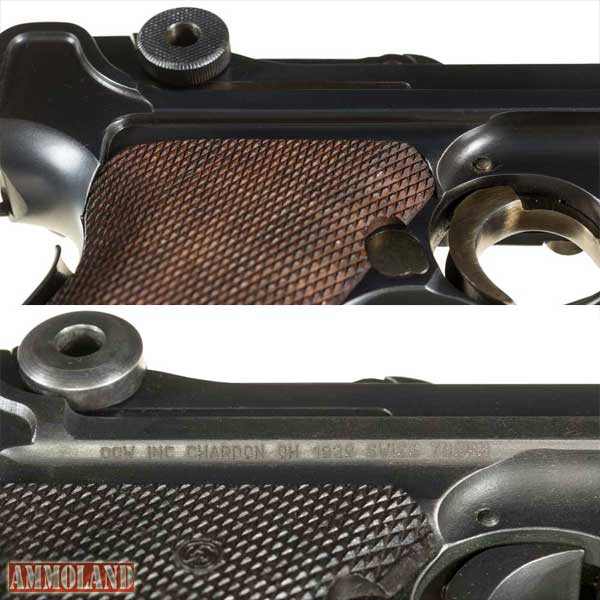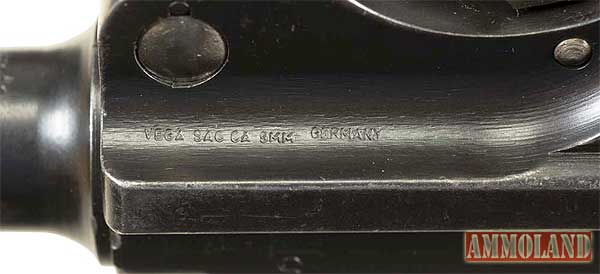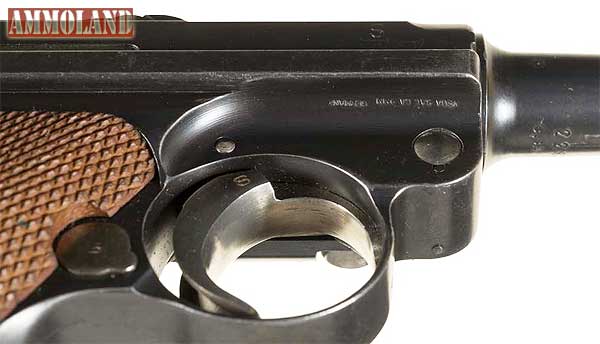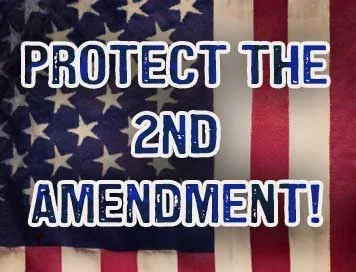

Rock Island, IL –-(Ammoland.com)- Nobody wants something they value trashed. This is true of everyone, but especially of collectors.
Whether it’s Ming vases, cars, priceless paintings, sports cards, autographs, Beatles memorabilia, or antiques, collectors in nearly every field want their items to be in the best possible condition and above all, original.
Firearms collectors are no different.
In fact, firearms collecting can be a much more demanding genre of collecting because originality is revered. A field of collecting that will lend itself well to this analogy is that of coins.
In the world of coin collecting, as in firearms collecting, condition is a key factor when determining value. Whether a deliberate or unintentional mishandling, if a coin is in less than perfect condition, it receives an appropriate grade to reflect its status. Some coins can even receive the unsavory title of “No Grade.” There are two major coin grading services, Professional Coin Grading Service (PCGS) and the Numismatic Guaranty Corporation (NGC), and each describes the No Grade status in different yet similar ways. Bear with me, I promise this will all come back to guns.
PCGS: “Occasionally, the experts at PCGS encounter coins which, for one reason or another, cannot be authenticated or graded. These “No Grade” coins fall into three categories: problem coins, inconclusive, or ineligible.”
Yes, such categorization can be rather vague without their helpful table. However, some of the characteristics that make a coin a “No Grade” for PCGS are the same ones that can make a firearm less valuable or desirable to collectors and investors. Some of those undesirable qualities are: filled or unfilled holes, artificial retoning or polishing, harsh cleaning or polishing, counterfeits, large prominent scratches, refinishing, replating, intentional markings, and vandalism.
NGC similarly states that,
“Not all coins are eligible for grading at NGC because of detrimental surface conditions. These coins are commonly referred to as “no grades.” NGC understands that it can be a frustrating experience for a collector to discover that his or her coin is not eligible for grading, and in response has produced an Internet-based resource, “Understanding ‘No Grade’ Coins.
The online resource both describes and illustrates the following types of “no grades:”

Once a coin has been classified as a No Grade, it can suffer a 50-90% reduction in value depending on the coin and the nature of the damage. Also, a No Grade status is irreversible because the coin has been irreparably altered. Once it has been defaced in such a way, it can never go back. Specifically, one of the ways that NGC further defines “Mechanical Damage” in the list above is Graffiti. Graffiti describes a coin into which initials or some other writing has been scratched or carved.
It doesn’t take much of a leap to see the correlation of depreciating factors shared by numismatists (coin collectors) and firearms collectors. Neither group wants their treasured items damaged by previous users, cleaned improperly if at all, counterfeited, corroded, stained, damaged, mutilated, bent, or marked after the initial manufacture or minting. In both fields, damage reduces desirability, its ability to be traded, bought, or sold, and in turn the object’s value. It is with this in mind that we discuss the subject of import markings on firearms.
Import Legislation
Despite the title of this article, prior to 1968 there were very few troubles with imported firearms. Military surplus arms had few restrictions (except machine guns, silencers, destructive devices, etc), there was no legislation requiring firearms to have a “sporting purpose,” and pistols didn’t have to worry about characteristics that would have them labeled as a “Saturday Night Special.” However, once the Gun Control Act of 1968 (GCA) was passed through Congress everything would change. Among other changes, imported guns would suffer several new regulations.
End importation of firearms (ex. “Saturday Night Specials”), frames, receivers, barrels, and ammo with no discernible “purpose” (sporting purposes, research purposes, curio/museum pieces, etc)
That said prohibitions would NOT extend to purchases of any department or agency of the U.S. (2)
- Mandatory “conspicuous” engravings with minimum size and information requirements
As with most legislation, along with these new requirements came new difficulties, specifically for collectors and shooting enthusiasts to get their hands on quality arms from other countries. One of the additional regulations required all imported arms to have certain information engraved on them to facilitate tracing by government or law enforcement agencies.
The data required to be on all non-antique firearms imported to the United States after the passing of the GCA in 1968 are as follows:
- 1. Serial number: This number cannot duplicate any previous one used by the importer. Must appear on the frame or receiver. Must use Roman letters and Arabic numerals (no Greek, Cyrillic, etc).
- 2. Name of Manufacturer
- 3. Country of Origin
- 4. Model Designation
- 5. Caliber
- 6. Name of Importer
- 7. City & State of Importer
First of all, if you’re thinking, “That’s a lot of information to place on a gun to import it,” then you’re correct. It is, but it doesn’t end there. Something that was omitted from each of the numbered requirements was the phrase, “must be conspicuously engraved.” Each of those pieces of information must appear, either engraved, cast, stamped, or laser written, in text at least .003 inch deep. Furthermore, the serial number also has the sole height requirement of “no smaller than 1/16 of an inch.”
In fairness, if any of that information already appears on the firearm from the manufacturer, it does not need to be duplicated. Also, these markings are only required on firearms, but since the ATF does not recognize antique weapons as firearms they are exempt from the requirement.
Every gun imported to the United States since 1968 must have that information on it from the manufacturer or it must be placed there by the importer within 15 days after the firearm is released from Customs. Doesn’t matter whether it’s a museum grade Walther or an off-the-rack Steyr Scout made in Austria, if it is imported after 1968, it has to have the proper information on it.

Devil’s Advocate
As we’ve already established with coins and guns, negatively effecting the condition of a collectible harms it in aesthetics, value, and desirability. However, there are those that argue against the ill-effects of import marks on a firearm. Here are some of those arguments.
Q: How are import marks any different than proof marks?
A: On the surface, this question appears to have some validity. If some marks can make a gun super rare and desirable, why are import marks such a detriment? First off, proof marks are often placed by a manufacturer or an organization integral with its placement. For example, collectable firearms will often have inspector’s marks placed upon them or proof marks from being test fired. Similarly, in the late 19th century and into WWI, Germans would at times mark their firearms to indicate the military unit using them. Many sidearms have a police department’s initials placed upon them. Proof mark add value because they can indicate provenance, date of manufacture, or in a best case scenario truly set a gun apart if it has an especially rare origin. For example, Winchester began marking the barrel and receiver frame ring with the Winchester definitive proof in late 1905. This is a proof mark that can really come in handy for collectors trying to date their guns! Proof marks can also add authenticity to a gun. Why are proof marks different then import marks? Proof marks provide history, origins, stories, and possibly increased value. Import marks tell you what business imported it into the United States, its city & state, and information you likely already know like manufacturer, country of origin, model, and caliber.
Q: Aren’t import markings placed in “hidden” locations like under a forearm stock or behind a pistol’s grip?
A: Some of them may have been up until the year 2002, when the requirement was added that the markings “must be conspicuous.” In other words, you have to be able to plainly see it. The markings cannot be covered by a flash hider, suppressor, or permanent parts of the weapon. Furthermore, the markings cannot be placed in an area where they might be destroyed, easily eroded, etc. If your firearm was imported after 2002 be prepared to see those marks on a more prominent location such as the frame, receiver, or barrel.
Q: Don’t the import marks tell a story like proof marks? They’re part of the gun’s history.
A: Since those marks do indicate where the gun has been during some part of its life, this is correct to a certain extent. However, as indicated earlier, they cannot tell you the vast wealth of information that can potentially be gleaned from proof marks. Import marks tell you the absolute most basic information like caliber, country of origin, etc. They are used for tracking, documentation, and nothing else. Period.
Proof marks, on the other hand, can tell novel’s worth of stories. You can find out where the gun was made, who inspected it, what military or law enforcement unit the item was issued to, they can further narrow down a date of manufacture, and so on. What adds value about this? Gun collectors love history. Condition, rarity, and aesthetics are all important factors, but when you add a fascinating history to a firearm it’s value can increase exponentially. If you know the military unit that a particular firearms was assigned to, you know what possible battles it was in, the assignments of that unit, members of that unit, and so on! You could possibly trace the gun’s entire military history and that gets collectors very excited. Besides, even if someone were to argue that both marks indicate a part of the gun’s history, which one do you find more fascinating: the fact that the gun was used in the Battle of the Bulge or that it was imported by the ATF-compliant Billy’s Gun Store & More, Las Vegas, NV? Exactly. Furthermore, if you knew your gun had the history of being used in such a momentous battle, would you really want such a modern influence emblazoned on it forever? It’s simply distracting and worse, is graffiti on a collector grade firearm.
Import marks are solely for ATF tracking information. Proof marks tell history.
Q: Import marks are small. They’re not that big of a deal.
A: Millions of dollars lost in marked guns say otherwise. Post manufacturer alterations of a gun always have consequences. Why else would guns classified as “original” command such a premium? Why else would collectors work so hard to put guns back into “as original” condition? As mentioned with coins, or even a “salvage” or “flood” title on a car, marking a gun is a Pandora’s Box – it can’t be undone. Say you have an extremely generous collector friend. He offers you your choice of two nearly identical firearms. One has an import mark and one does not. Which one do you choose?

on the lower of the two Luger pistols shown below.
Someone once tried to counter this argument by saying that “even the Sphinx has graffiti on it.” True, the Sphinx is still a treasure despite the years of graffiti carved into its iconic shape. However, are people actually claiming that the Sphinx would not be better preserved without centuries worth of vandalism imposed upon it? This is a question for those saying import marks are not that big of a deal. “Are you really trying to say that the gun would not be better preserved without the import marks?” Given the choice, nearly everyone will choose the piece without the import marks. This demand increases both their rarity and their price.


If the gun you are buying was imported prior to 2002, you may be in luck if the gun you want has its import marks placed in a location that can only be seen after partial disassembly or field stripping the firearm. The gun appears whole on the outside, but careful, honest, and established collectors will note that the gun has import marks.
Q: I only bought this gun for a shooter. I don’t care if it has import marks.
A: That’s fine. If so this article may not be targeted to your gun buying habits at this time and that’s OK. Shooting guns are meant to be shot and collector guns are purchased for a myriad of other reasons. One is for utility and the other is not, which is fine. Some stamps are meant to send mail and some serve better in collections. By purchasing, for example, a Mosin-Nagant 91/30 as a shooting gun for $150, if you lose a percentage of its value for it having import marks, you really haven’t lost that much of your investment. However, if a high end gun collector purchases a rare 1904 Navy Luger or a 02/03 trials gun for $40,000+ and that buyer loses a percentage of their investment, the monetary damage would have significantly higher consequences.

Besides, the example of choice still rears its head. If you were offered an excellent condition Mosin-Nagant with import marks or a nearly identical one without them, which would you choose? Why not take the one without the import marks? What have you lost? By taking the firearms without import marks, you can only gain demand, condition, and thus value. By selecting a firearm with import marks you can only lose value or shoot it with a clean conscience that the value you decrease will be lessened. The latter of which is not even a consideration for an investment grade firearm as it would not be fired anyway.
The majority of collectors love history and even if they don’t they certainly love the financial benefits that an exciting, documented history can provide. All collectors love condition.
If import marks can neither imbue a gun with a fascinating history nor enhance its condition, then they are superfluous marrings that are to be avoided.
- No one sets out to collect the most mediocre examples of their hobby.
- No one sets out to buy a truly poor specimen that is of little interest to like minded enthusiasts.
- No one wants to apologetically explain or excuse away the glaring flaws in their collection.
Unfortunately, import marks on guns bring all those things with them. Like a coin with “graffiti” or a classic car with a salvage title, no matter how lovingly cared for since that moment, they will forever carry forward their stigma with them. The only time import marks carry little weight is when the gun itself has very little value to lose. But those aren’t exactly the guns one dreams of having in their collections are they?
SOURCES:
- https://www.atf.gov/files/publications/download/p/atf-p-5300-4.pdf (Importation, p.56)
- https://www.atf.gov/firearms/guides/importation-verification/firearms-verification-overview.html
- https://www.ngccoin.com/news/viewarticle.aspx?NewsletterNewsArticleID=531
- https://www.ngccoin.com/pdf/nograde.pdf
- https://www.pcgs.com/grades.html
- https://www.saf.org/lawreviews/zimring68.htm
About:
Rock Island Auction Company has been solely owned and operated by Patrick Hogan. This company was conceived on the idea that both the sellers and buyers should be completely informed and provided a professional venue for a true auction. After working with two other auction companies, Mr. Hogan began Rock Island Auction in 1993. Rock Island Auction Company has grown to be one of the top firearms auction houses in the nation. Under Mr. Hogan’s guidance the company has experienced growth each and every year; and he is the first to say it is his staff’s hard work and determination that have yielded such results. Visit: www.rockislandauction.com





The simple fact is that import marks decrease the value of a gun. But that said you can not get some guns without one. The CZ52 would be hard to find with out import marks. A K98 one can pick up for 300 in very good condition that was a Russian Capture and has import marks where as a GI bring back with out is now 1200 and up. A Garand with import marks from Korea is half what one that does not have them is. A luger is now heading for 2 grand but with import marks you can… Read more »
Not… Sure… What the point was.
We cannot choose to not have import marks, especially on guns only made (or imported) after 1968. So, what are you saying here?
Agree with first comment, way, way, way too much info on coin collecting.
Hi, I have a 1910 DWM Luger 9mm. It has XIX.30. marked on the front strap. Is this an import making?
Thank you,
John
I am not sure who first used the phrase “kill your darlings,” meaning that writers should weed out their precious ideas before it ruins their work, but whoever it was, you should have heeded the advice. The 40% of this article that is about coin collecting can be summed up thusly: “Just as original condition is important in coin collecting, it is important in firearms collecting.” Nothing beyond that is necessary for this article. By indulging your obvious interest in coin collection, you guaranteed that few people would find this article via search, and even fewer would wade through it.… Read more »
Last month I purchased a 1956 Yugo M48A (b) Mauser in very nice condition for $250 , without the ugly re-numbered
Jan. 30 , 2002 ATF required U.S. serial number …. I was wondering if there is any actual value difference in relation to
a post Jan. 30 , 2002 M48A (b) rifle …. the numbers on this rifle also match , and shows very little actual use .
I just started collecting/shooting guns after several years of heavy drinking(never felt safe). Now I am more responsible. I have been purchasing new guns to shoot but am becoming very interested in some of the older ones as well. I purchased a Bulgarian Makarov a few weeks ago and even though it was made in 1988, I got my foot in the door for the start of an older collection per say. What kinda bums me out is that some of the guns I am interested in were $100-$300 less only a handful of years ago, but hey, I can’t… Read more »